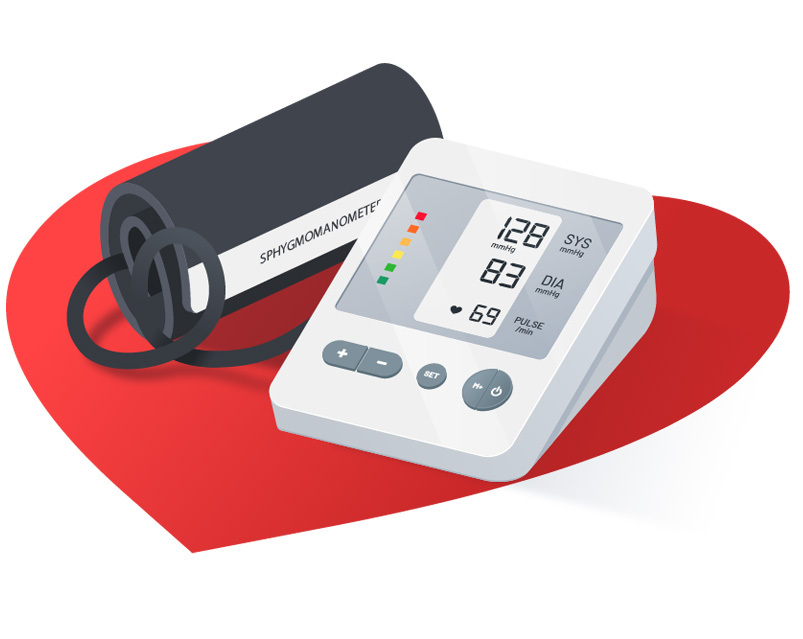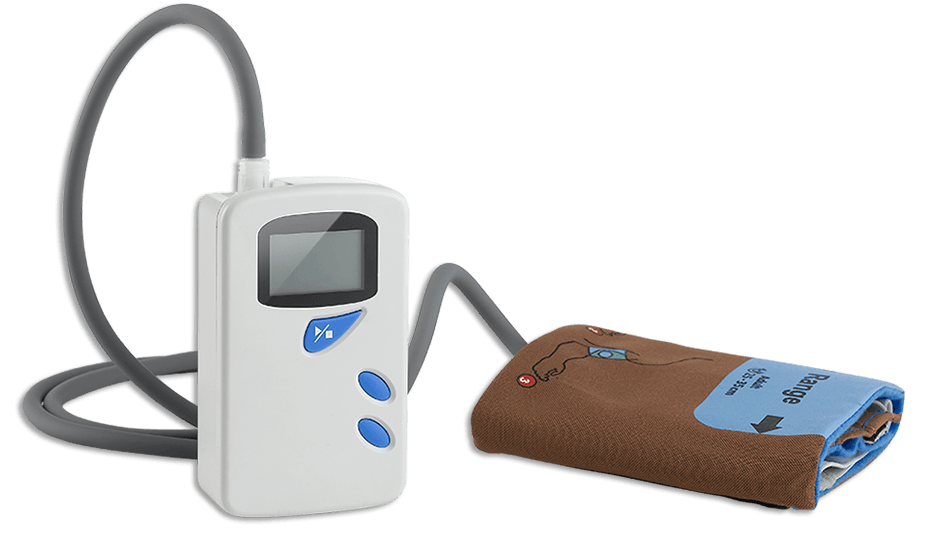Comprehending the Value of the ABPM Test in Hypertension Management
Ambulatory Blood Pressure Monitoring (ABPM) is a pivotal tool in taking care of high blood pressure. By supplying continuous blood pressure readings over 1 day, it offers understandings that conventional measurements can not. This technique can expose problems such as white coat syndrome and masked hypertension. Comprehending these subtleties is crucial for reliable client treatment. As medical care progresses, the effects of ABPM fit individualized therapy techniques come to be significantly considerable. What does this mean for the future of high blood pressure monitoring?
What Is Ambulatory Blood Pressure Monitoring (ABPM)?
Ambulatory Blood Pressure Monitoring (ABPM) is a method that permits the constant dimension of blood pressure over a 24-hour period while patients take part in their daily activities. This ingenious strategy involves the usage of a mobile gadget that automatically takes blood pressure readings at established periods, generally every 15 to half an hour. ABPM provides a complete account of blood pressure changes throughout the night and day, capturing variations that might be missed throughout common office measurements.It is specifically useful for detecting problems such as high blood pressure and white layer syndrome, where people show elevated readings only in professional setups. By providing real-time data, ABPM enhances the precision of hypertension analyses and help in tailoring treatment strategies. The insights gained from this monitoring may cause much better monitoring of cardio health, enhancing the importance of ABPM in modern-day medical technique.
Just How ABPM Differs From Traditional Blood Pressure Measurements
While traditional blood pressure measurements normally count on readings absorbed a clinical setup, ABPM offers a more substantial approach by examining blood pressure over a full 24-hour duration. Conventional approaches frequently create a restricted number of analyses that might not capture changes in blood pressure throughout the day. On the other hand, ABPM enables for continuous monitoring, giving understandings into variations during various activities, such as resting and exercising.Additionally, standard measurements may be affected by the person's anxiousness throughout a physician's check out, understood as "white layer disorder," potentially bring about inaccurately high readings. ABPM mitigates this problem by gathering information in a familiar setting, yielding an extra precise representation of an individual's blood pressure. The gadget generally takes measurements at regular intervals, guaranteeing thorough information collection. This essential distinction highlights the value of ABPM in supplying a complete photo of a patient's blood pressure profile.
Advantages of ABPM in High Blood Pressure Administration
Making use of Ambulatory Blood Pressure Monitoring (ABPM) provides significant advantages in managing high blood pressure. It supplies exact and continuous blood pressure readings, helping to identify problems such as white coat syndrome. This exact information allows medical care providers to make even more tailored therapy adjustments tailored to specific person needs.
Exact Blood Pressure Monitoring

Identifying White Coat Disorder
Ambulatory Blood Pressure Monitoring (ABPM) plays a considerable role in identifying white layer disorder, a phenomenon where people show raised blood pressure readings in a medical setup but keep normal levels in their everyday lives. This problem can result in misdiagnosis and unnecessary treatment, making complex hypertension management. ABPM gives a comprehensive assessment of blood pressure over a 24-hour period, recording variants that happen throughout everyday tasks and sleep. By contrasting these readings to clinic measurements, doctor can distinguish between true hypertension and white coat disorder. Ultimately, recognizing this syndrome is necessary for customizing proper treatment strategies and protecting against overtreatment, making sure that people obtain care that precisely mirrors their blood pressure condition outside the clinical atmosphere.
Customized Treatment Adjustments
Enhancing high blood pressure monitoring with customized treatment adjustments comes to be possible with the insights gained from ABPM. This approach gives continual blood pressure monitoring, enabling health care service providers to identify patterns and variations that may not be apparent during basic office visits. By understanding a person's distinct blood pressure account, medical professionals can customize therapy strategies that think about variables such as medicine efficacy, way of living affects, and individual feedback to treatment. This individualized technique not just improves individual adherence however likewise enhances general results by decreasing the threat of problems connected with uncontrolled hypertension. Inevitably, using ABPM empowers medical professionals to make informed choices, resulting in content extra effective monitoring methods that line up with each patient's certain needs.
Determining White Coat Hypertension and Masked Hypertension
White coat high blood pressure occurs when individuals exhibit elevated blood pressure readings in a clinical setting due to anxiousness, while their measurements are typical in other atmospheres. On the other hand, concealed high blood pressure refers to individuals whose blood pressure is regular during medical brows through but raised in day-to-day live. Comprehending these two phenomena is necessary for accurate hypertension monitoring and therapy choices.
Defining White Coat Hypertension
Hypertension administration often includes comparing numerous blood pressure conditions, particularly white layer high blood pressure and masked high blood pressure. White layer high blood pressure is characterized by elevated blood pressure analyses in professional settings, frequently because of stress and anxiety related to clinical settings. People with this problem generally display regular blood pressure degrees beyond these setups. This phenomenon can cause misdiagnosis and unneeded therapy otherwise appropriately determined. It is important for doctor to recognize this condition to prevent overtreatment and to guarantee accurate high blood pressure administration. ABPM test in Bangalore. Using ambulatory blood pressure monitoring (ABPM) can assist distinguish white coat high blood pressure from sustained high blood pressure, enabling more reliable and tailored therapy approaches for individuals experiencing this unique blood pressure response
Understanding Masked Hypertension
Masked high blood pressure presents a significant challenge in high blood pressure administration, as it commonly goes undiscovered in clinical setups. This problem happens when a client's blood pressure analyses are regular during clinical visits but raised in the house or during everyday tasks. Unlike white coat high blood pressure, where anxiousness in a scientific environment causes short-term spikes in blood pressure, masked hypertension can result in unknown cardio threats. People may think they have normal blood pressure, ignoring essential lifestyle adjustments or therapies. Identifying masked hypertension is important, as it can bring about significant health and wellness issues gradually. Ambulatory Blood Pressure Monitoring (ABPM) is an efficient tool for identifying this problem, enabling health care experts to provide timely treatment and improve patient results.
The Function of ABPM in Personalized Therapy Strategies
As health care companies progressively acknowledge the relevance of customized treatment, the execution of Ambulatory Blood Pressure Monitoring (ABPM) has come to be crucial in tailoring treatment strategies for patients with hypertension. ABPM permits for constant blood pressure measurement over 24 hours, revealing click to find out more patterns that may be missed out on during conventional office sees. This extensive data uses understandings right into a person's blood pressure irregularity and nighttime levels, which are essential for recognizing total cardio danger.
Translating ABPM Outcomes: Comprehending Patterns and Trends
Analyzing the arise from Ambulatory Blood Pressure Monitoring (ABPM) calls for an eager understanding of numerous patterns and fads that arise from the collected information. Clinicians examine the 24-hour blood pressure account, distinguishing between daytime and nighttime analyses to identify potential white-coat high blood pressure or covered up high blood pressure. A consistent altitude in daytime readings may show inadequately controlled high blood pressure, while nighttime dips can symbolize effective blood pressure monitoring or nocturnal high blood pressure, which postures extra cardiovascular risks.Trends with time, such as sustained boosts or fluctuations, are additionally necessary. Irregularity in analyses can suggest underlying issues, such as anxiety or medicine non-adherence. Furthermore, the analysis of blood pressure patterns in connection with everyday tasks can offer understandings into lifestyle factors influencing hypertension. By meticulously translating these outcomes, medical care experts can tailor treatment strategies to enhance client end results in hypertension monitoring, ultimately bring about far better cardio wellness.
The Future of Blood Pressure Monitoring and Hypertension Treatment
Arising modern technologies and innovations are positioned to transform blood pressure monitoring and high blood pressure care in the coming years. Wearable tools outfitted with sophisticated sensing units are expected to give constant, real-time blood pressure analyses, enabling for more personalized therapy programs. These devices will certainly not just enhance client interaction but likewise assist in remote monitoring by medical care service providers, resulting in prompt interventions.Artificial intelligence and artificial intelligence algorithms will play an essential role in assessing person information, recognizing patterns, and anticipating hypertension-related problems. This predictive ability can result in more proactive monitoring approaches. Furthermore, telehealth services will likely broaden, allowing clients to consult with experts and receive tailored advice without the demand for in-person visits.Furthermore, developments in mobile applications might equip clients to track their blood pressure separately, fostering a sense of ownership over their health. In general, the future of blood pressure monitoring and hypertension treatment shows up promising, with innovation at its leading edge.
Often Asked Concerns

For how long Does an ABPM Test Commonly Last?
The ABPM test normally lasts 24 hours. During this period, a portable tool actions blood pressure at routine intervals, giving considerable information on a client's blood pressure patterns throughout everyday activities and sleep.
Can ABPM Be Made Use Of for Youngsters and Adolescents?
ABPM can certainly be used for youngsters and teens - ABPM test in Bangalore. It offers important insights into their blood pressure patterns, assisting medical care providers accurately identify and take care of hypertension in younger populations, promoting better long-lasting find more wellness results

What Should I Prevent Prior To Taking an ABPM Test?

Prior to taking an ABPM examination, people must avoid caffeine, pure nicotine, and arduous exercise, as these can momentarily raise blood pressure readings. In addition, it's advisable to avoid putting on tight apparel that might impede dimension precision.
Exactly how Often Should I Undertake ABPM Screening?
The regularity of ABPM screening varies based on specific wellness requirements. Normally, it is suggested every six to twelve months, particularly for those with uncontrolled hypertension or substantial adjustments in blood pressure medication. Normal monitoring aids efficient management.
Is ABPM Covered by Insurance Coverage Strategies?
The coverage of ABPM screening by insurance plans varies substantially. Clients need to consult their particular insurance policy suppliers to figure out eligibility and any type of prospective out-of-pocket expenditures related to this diagnostic treatment for high blood pressure monitoring.